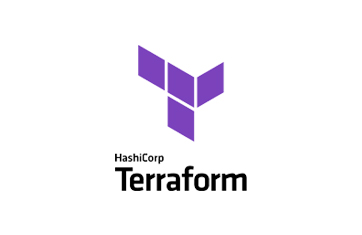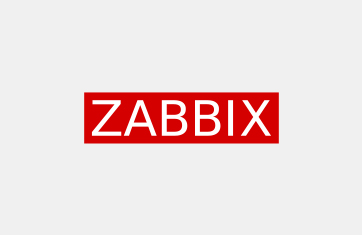Prometheus
What is Prometheus?
Prometheus is an open-source monitoring and alerting toolkit designed for reliability in cloud-native environments. It specializes in collecting and storing time-series data, making it ideal for tracking performance metrics in distributed systems. Prometheus uses a functional querying language - PromQL for querying, enabling detailed analysis and real-time alerts for proactive system monitoring.

Who owns and maintains Prometheus?
Prometheus is primarily maintained and developed by the Cloud Native Computing Foundation (CNCF), which took over stewardship of the project in 2016. Originally, Prometheus was created by engineers at SoundCloud in 2012, but it has since grown into a widely supported open-source project. The CNCF, which also hosts Kubernetes, supports Prometheus’ development by coordinating contributions from a large community of individual developers and companies. This open governance model allows Prometheus to continuously evolve, with contributions from tech companies and independent developers alike. For further details of the Prometheus project on the CNCF website, see: Prometheus | CNCF.
Why do people use Prometheus?
Prometheus is popular in DevOps and IT due to its cloud-native design, which is suitable for dynamic, containerized environments such as OpenShift or Kubernetes. It primarily uses a pull-based approach to collect metrics, as opposed to a push via agent approach, although a push-based model is available. The security implications of push vs pull monitoring are important to understand, see: Secure Monitoring - Open TCP Ports are a security risk (eginnovations.com).
For users prepared to invest in developing skills with Prometheus’ query language (PromQL), Prometheus can enable powerful data analysis, making it easy to derive insights and set precise alerts.
Prometheus stores data as time-series, collecting raw data that can be processed for trend analysis and anomaly detection when troubleshooting. Prometheus is often integrated with Grafana to gain visualization and dashboarding capabilities. Other tools often used to create a more comprehensive monitoring solution, include:
Prometheus’ open-source nature has cultivated a strong community, leading to extensive support and options to build integrations with tools across the DevOps ecosystem. For those with the skills and inclination to build a bespoke monitoring solution, Prometheus offer a very useful subset of the functionality needed.
Prometheus vs. Grafana
Prometheus and Grafana are complementary rather than direct competitors. Prometheus is focused on data collection and storage, using its own query language (PromQL). Grafana, on the other hand, is a visualization tool that supports various data sources, including Prometheus, to create interactive dashboards. While Prometheus handles data scraping and alerting, Grafana provides the visualization layer for interpreting that data.
Prometheus vs. Nagios
Nagios is a long-standing tool known for monitoring servers and network devices with a focus on availability and basic performance metrics. Prometheus, however, is designed for modern cloud-native environments with powerful real-time monitoring, time-series data, and a flexible query language. While Nagios uses a static configuration approach, Prometheus supports dynamic service discovery, making it more adaptable for containerized and microservices architectures.
Some further details on Nagios are covered, here: Top Open-source IT Monitoring Tools.
Prometheus vs. eG Enterprise
eG Enterprise is a comprehensive SaaS or on-prem solution that integrates real user monitoring (RUM), synthetic monitoring, metrics, logs, and traces and performs automated correlation and root-cause diagnostics to provide unified observability with a user-friendly interface and built-in alerting. Unlike Prometheus, eG Enterprise offers centralized management and ease of use without infrastructure maintenance for its SaaS version.
Prometheus requires more setup and management. eG Enterprise offers commercial support for organizations that need to do due diligence. eG Enterprise is easy to set up, scales automatically, reports require no query languages, and it comes with advanced features like AIOps-powered anomaly detection and automated root cause analysis.
While Prometheus focuses more on cloud native applications and performance monitoring, eG Innovations provides a combo solution for any IT infrastructure that supports 500+ technologies across Digital Employee Experience (DEX) Monitoring, Application and Performance Monitoring, Commercially Off The Shelf (COTS) product monitoring and cloud and on-prem infrastructure monitoring. While the industry embraces hybrid infrastructures, eG Enterprise is designed to address the challenges in achieving success.
Pros and Cons of Prometheus
Pros:
Cons:
Prometheus at Scale - How Does Prometheus Scale?
Prometheus’ greatest weakness is often cited as its scalability. By default, Prometheus operates on a single machine, scraping metrics from containers, servers, and VMs individually. For large organizations managing hundreds of microservices with multiple instances each, this single-server model can quickly become overwhelmed. The result? Bottlenecks, missed metrics, and a struggle to maintain reliable observability in dynamic environments.
As Prometheus stores the metrics it scrapes on a local disk in a time-series database, the metrics generated by (for example) cloud-native applications can quickly fill the disk of a Prometheus server. Often organizations reduce the granularity of metrics they collect to work-around this limitation.
Prometheus scaling often forces you to juggle complexity, risks of data loss, and endless DIY integrations—leaving your team buried in operational overhead.
A good case study of an organization using Prometheus at scale is available from Trivago, see: How we scaled our Prometheus setup · trivago tech blog. If you do choose to implement your own solutions to overcome Prometheus’ scaling challenges, care needs to be taken with respect to security, particularly if you need to meet government or regulatory requirements with respect to compliance. This is often a significant driver for organizations adoptimng a turnkey alternative such as eG Enterprise that is certified and auditted to meet standards such as SOC 2 and ISO/IEC 27001:2022.








